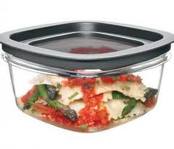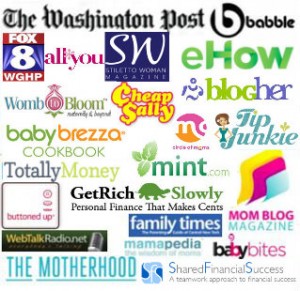You can see all the posts in this series by clicking on Frugal Food Allergy Living series. You can find more about living with food allergies on a budget at The Willing Cook.
Money Saving Mom featured my “Reader Tip” back in April. I encourage you to read that post Make Gluten-free Flour Using Your Coffee Grinder. Today, I will elaborate on those points a little further.
From the original post on Food Allergies and Budgets:
Pre-packaged gluten-free flours are pricey. A coffee bean grinder and whole grains/nuts can be a wonderful way to save money and enjoy various “flour” dishes. I have mentioned this on The Willing Cook website when I discussed my essential kitchen tools and more is to follow on the specifics of homemade flour in an upcoming post.
My husband has a wheat allergy, but no other glutens. His allergy is not so severe that I have to only buy certified gluten-free oats. Many oats on the market have a chance of being cross-contaminated with wheat (they interchange growing wheat and oats on the same field and use the same processing equipment), so most Celiac sufferers and severe wheat allergies have to use certified gluten-free oats. (I can tell you that they are not cheap.)
Since oats are a staple in his diet, especially for breakfast, this was the first place we started making our own flour. I could never come to terms with the high price of the pre-packaged wheat-free flours on the grocery shelf. So I decided that we should try to make our own flour and thought our small coffee bean grinder would be a great place to start. The money savings: oats already in the pantry and coffee bean grinder given to me as a birthday gift years ago — win-win budget savings.
Our first attempt was the wonderful recipe for date bars. I thought oat flour would work great for the crumbly crust and top. We were not disappointed (and we served them successfully to company too). We followed this with ground rice flour for our gluten-free fish breading. Again, we had a winner.
Over the years, we have successfully ground oats, white and brown rice, chickpeas, tapioca pearls, almonds, and even Rice Chex once when I was out of oats. This experiment has helped us keep a trimmed budget because we don’t buy the pre-packaged gluten-free flours.
Braun Coffee Grinder is the brand that we own and it has worked nicely for us. The one drawback is that the size is just over a half cup, so it doesn’t make large batches of flour. (Not that you would want to make large batches for fear of it going rancid.) There are larger coffee bean grinders on the market, such as Cuisinart DBM-8 and Bodum Bistro, but I do not have experience with them.
The other option, of course, is a grain mill. I have heard wonderful reports from people who grind their own wheat flour in a grain mill. They say there is nothing better than fresh baked bread made with freshly ground wheat. Upon researching the options, I found a Kitchenaid Stand Mixer Grain Mill attachment and the Electric Wondermill Whisper Mill. These options are much pricier, but would grind larger quantities of flour.
How does it work?
- You put the grain in your coffee grinder and grind it to the desired consistency. Repeat as necessary until you reach the required amount. That is it!
What are the actual savings of grinding your own gluten-free flour versus buying the pre-packaged flours?
I noted a few of the comparisons that I researched for the Money Saving Mom guest post. Here is a little more detail on where I find the best prices:
- Old-Fashioned Oats: The cheapest I have found is $1.99 for a 48oz can at Aldi. Compared to Amazon’s price on oat flour, there is about a 50-80% savings.
- Almonds: Best price for whole almonds is at Costco or Sam’s Club. If you can get them for $3.99/lb., that is a good price. Recently, I have been buying my almond flour at Trader Joe’s as it is less than buying whole almonds and grinding them. If you don’t have TJs, try grinding them yourself.
- Rice: I buy the large 25lb. bag of Basmati Rice at Costco. Aldi used to carry brown rice for the best price, but they no longer do. I now buy it at Costco. We eat a lot of rice, so buying the large quantity is a good deal for us. Over pre-packaged rice flour on Amazon, I save about 50%.
- I buy whole chickpeas and tapioca pearls at a local Asian grocer. This saves me about 90% over the pre-packaged ground flours.
So, have I convinced you to grind your own gluten-free flour? It truly is easy and economical. If you already grind your own flour (gluten-free or not), do you have any tips to share?
Up next week in the Frugal Food Allergy Living series: Shop Around

























Recent Comments